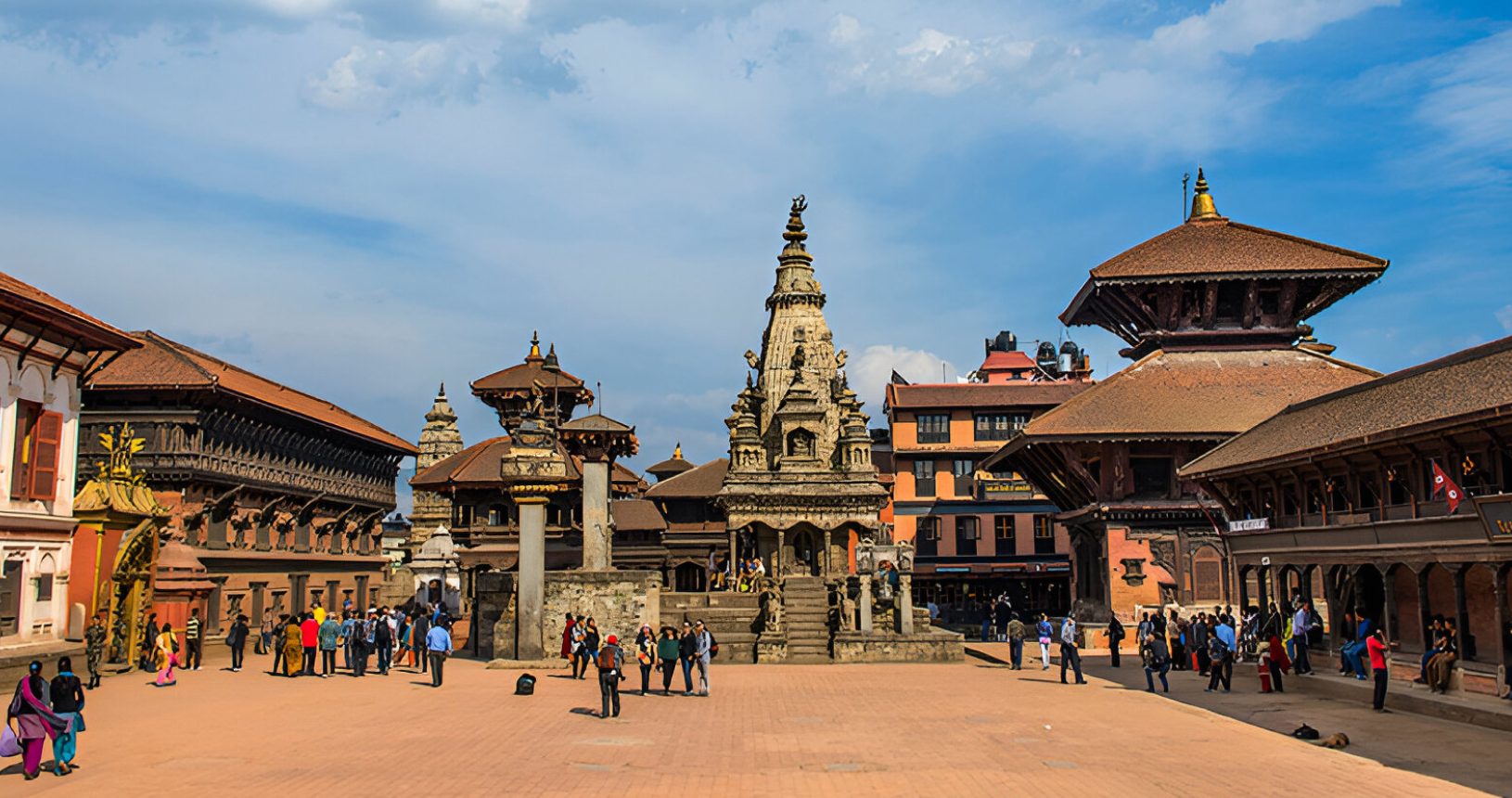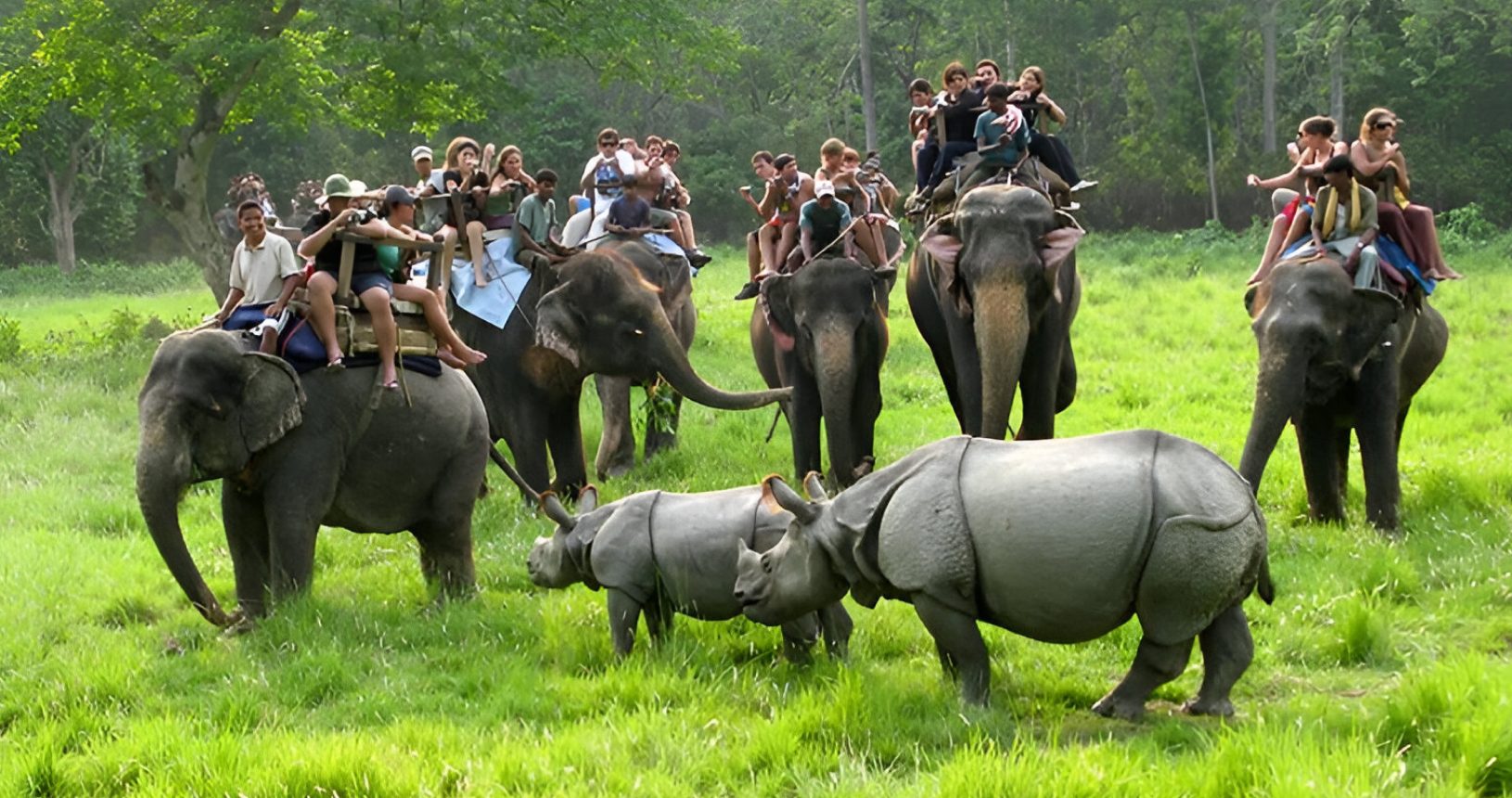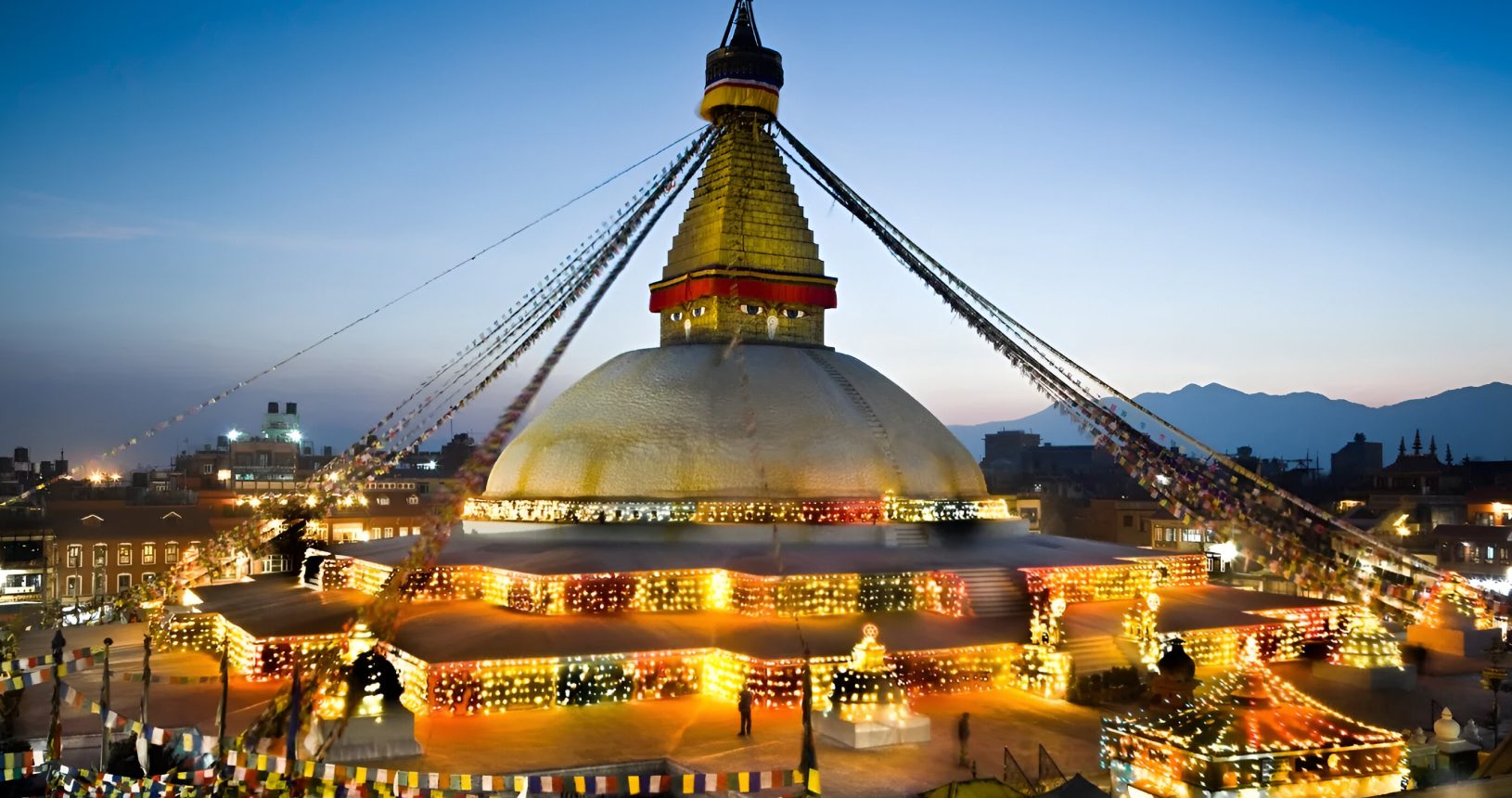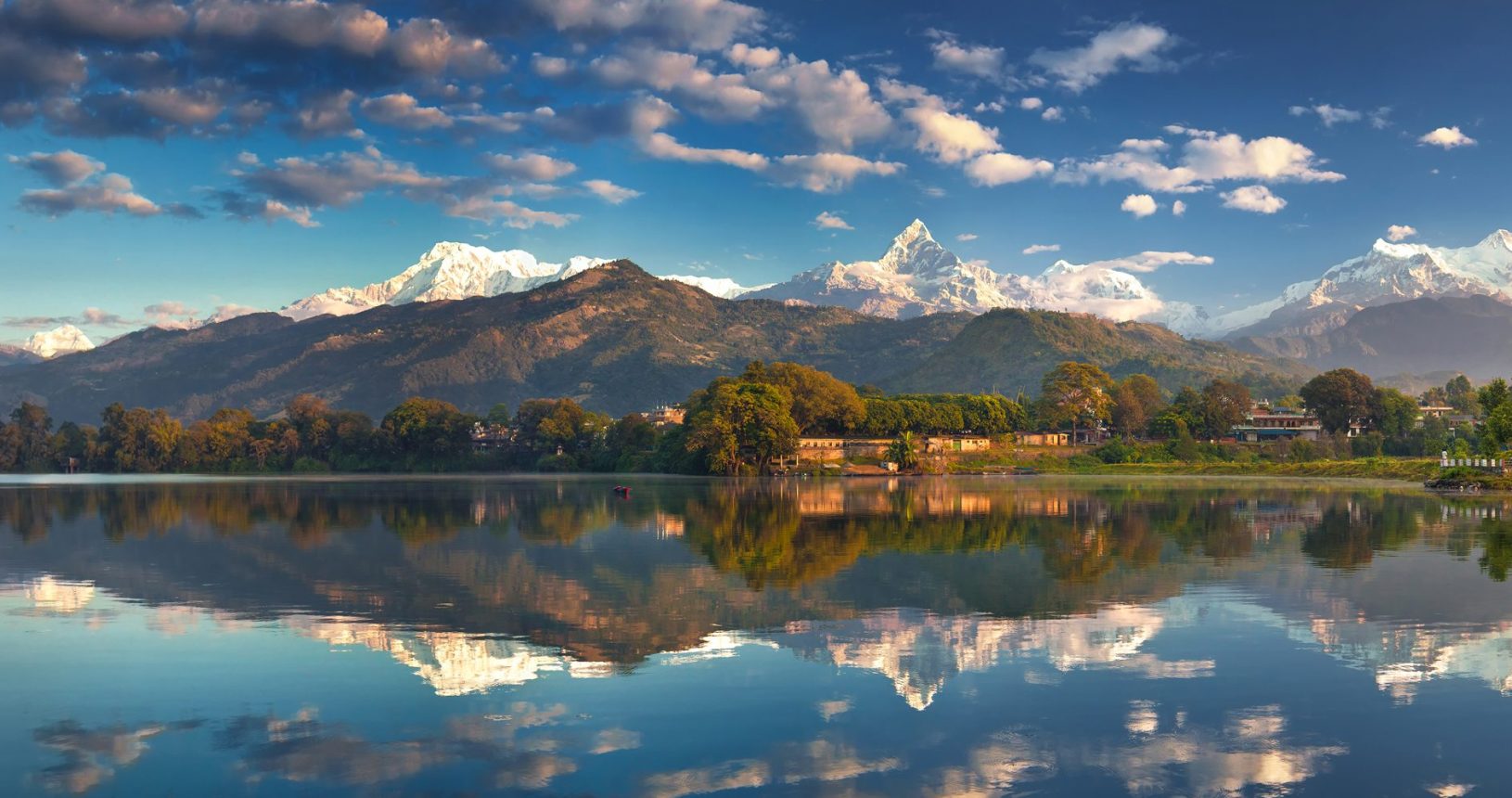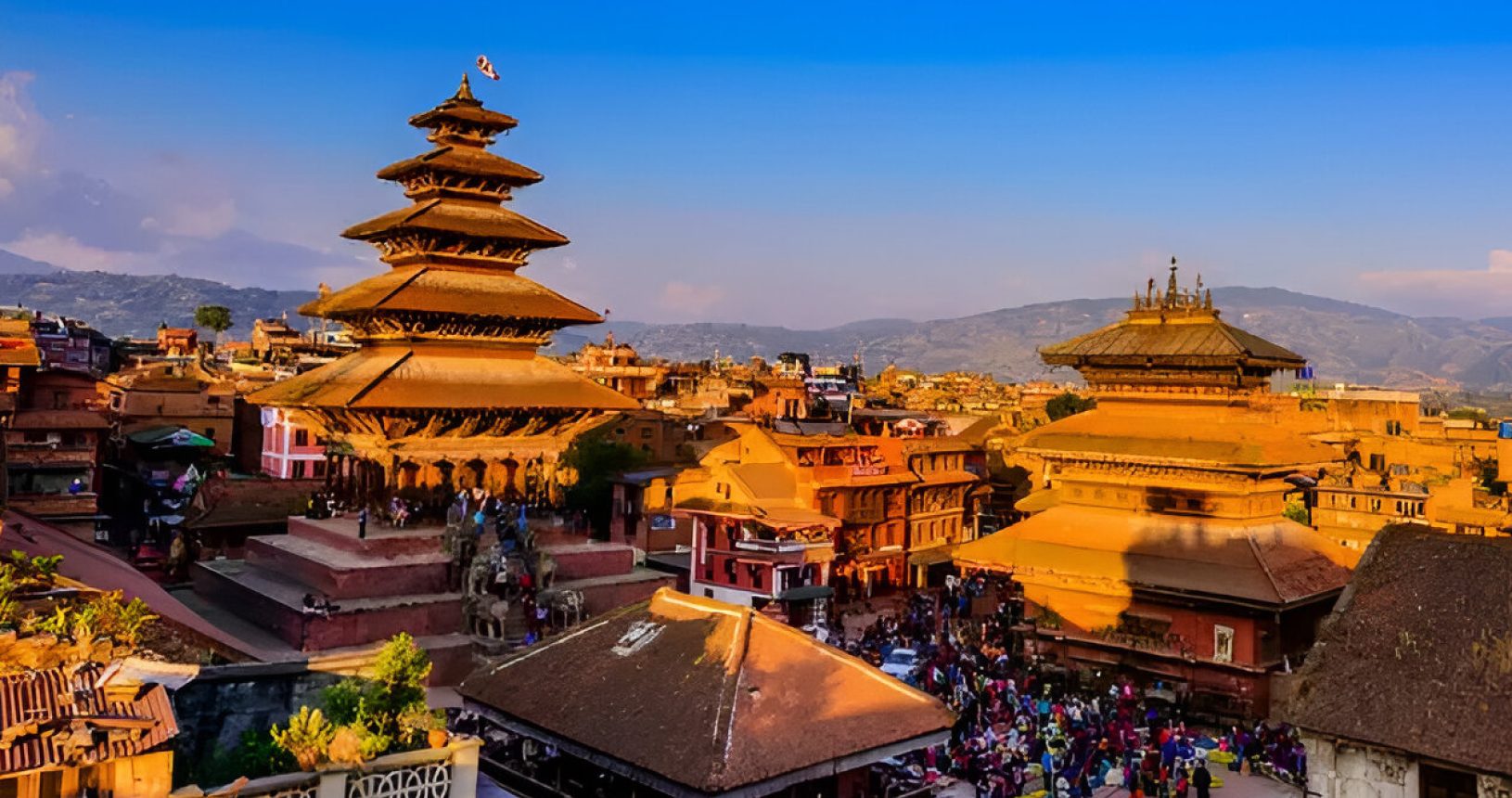Known as the Land of Everest and being “The only Hindu Kingdom in the world”, the kingdom of Nepal is a land of sublime scenery, one of the world’s best and archeologically very important temples and some of the best walking trails on the earth. Although the GDP of “The Land of Buddha” is very low, but it is rich in scenic splendour and cultural treasures.
The kingdom has long exerted a pull on the Western imagination and it's a difficult place to dislodge from your memory once you visit Nepal and return.
This is why so many travelers are forced to visit Nepal again and again with a greater appreciation of its natural and cultural complexity, a stout pair of walking boots and a desire for improved leg-definition.
History
Nepal's recorded history began with the Kiratis, who arrived in the 7th or 8th century BC from the east. Little is known about them other than their deftness as sheep farmers and fondness for carrying long knives. It was during this period that Buddhism first came to the country; indeed it is claimed that Buddha and his disciple Ananda visited the Kathmandu Valley and stayed for a time in Patan. By 200 AD, Buddhism has waned, and was replaced by Hinduism, brought by the Licchavis who invaded from northern India and overthrew the last Kirati king. The Hindus also introduced the caste system (which still continues today) and ushered in a classical age of Nepalese art and architecture.
By 879, the Licchavi era had petered out and was succeeded by the Thakuri dynasty. A grim period of instability and invasion often referred to as the 'Dark Ages' followed, but Kathmandu Valley's strategic location ensured the kingdom's survival and growth. Several centuries later, the Thakuri king, Arideva, founded the Malla dynasty, kick-starting another renaissance of Nepali culture. Despite earthquakes, the odd invasion and feuding between the independent city-states of Kathmandu, Patan and Bhaktapur, the dynasty flourished, reaching its zenith in the 15th century under Yaksha Malla.
Religion
Hinduism and Buddhism are two major religions of Nepal. Hindus and Buddhist are tolerant to each other and both the religious group worship each other’s deities and observe festivals, traditional customs and rites of both religious group in Nepal, followed by Muslims, Jains and Christians.
Nature
Himalayan Region – 15 percent of the total land of the country are covered with snow capped mountains in the northern part and altitude ranges from 4,877 to 8,848 meters including 8 peaks above the 8,000 meters namely Mt Everest (8,848m), Kanchanjungha (8,586), Lhotse (8,516), Makalu (8,463m), Cho Oyu (8,201m), Dhaulagiri (8,167 m), Manaslu (8,163 m) and Annapurna I (8,091 m).
Hilly Region – 68 percent of the total land of the country are covered by the hills and mountains in the central part of Nepal. Altitude varies from 610 to 4,877 meters in this region.
Terai Region- In the southern part, the plain area of Terai region covers the 17 percent of the total land of the country.
People
People of Nepal can be divided into two distinct groups and there are many different ethnic groups in Nepal living in different part of the country with their own unique cultures, languages and religions.
The ethnic group of Magars, Rais, Sunuwars and Gurungs live in the eastern mountains observing their own culture and speaking their own mother languages. By tradition, most Gurkha soldiers come from these ethnic groups and are famous for the bravery in the battles. Sherpas, inhabitants of the Northern Himalayan region are influenced with the Tibetan culture. The Sherpas are famous in the world for mountaineering.The Newars constitute the important ethnic group in the Kathmandu valley. The Newars are rich in culture and famous for their craftsmanship. There are many artistic pagodas, monuments and old palaces in the Kathmandu valley built by the Newars. The ethnic group of Tharus, Maithili, Bhojpuri Danuwar etc live in the Terai region.The Brahman and Chhetris also play an important role in Nepalese Society. These groups are originally from the west Nepal and now inhabit the most of all the parts of the country.Tamangs live outside the rim of the Kathmandu valley. The Thakalis inhabitant in the northwest part, upper the Kali Gandaki Rivers. The Thakalis were considered to be expert traders in the past. Apart from the above, there are still many other ethnic groups in Nepal and all of these groups are tied up together by their common ideals of peace and nationalism.
Culture
The Himalayan Kingdom has the richest and most diverse culture landscapes anywhere. Nepal is the holy land of Lord Pashupatinath and Gautam Buddha where the Hindus and Buddhists have lived together in harmony for centuries. The Temple of Pashupatinath in Nepal is the most sacred Hindu shrine and one of the four most important cities in the world for Shiva worshippers. Lord Buddha, the light of Asia was born in Lumbini in Nepal's southern plains, which makes Nepal a scared pilgrimage destination for Buddhists as well.
The rich tapestry of the cultural heritage of Nepal is synthesized in the Kathmandu Valley. The three ancient cities of the Valley Patan, Kathmandu, Bhaktapur represent an epitome of harmony in urban design, elegant architecture and refined culture. These cities pack a concentration of religious monuments unequalled in the world. Don't miss the seven monument zones named as World Heritage Sites by UNESCO all situated within the small confines of the Valley.
Adding dazzling color to Nepal's myriad attractions are the many festivals that dot the calendar. Join in the numerous annual festivals that are celebrated throughout the year in traditional style highlighting enduring customs and beliefs. Go for village tours and visit the multi-ethnic groups to get first hand experience of their customs and lifestyles.
As eating is a special affair in Nepal, there is food for each and every occasion and festival. Kathmandu offers an incredible selection of dining opportunities. There are many restaurants that serve only authentic Nepali food complete with ethnic ambience.
Fairs & Festivals
Nepal's festive calendar is hectic. Dasain, celebrated nationwide in October, is the most important of all Nepalese celebrations and features the biggest animal sacrifice of the year. Running a close second is Tihar (November), but unlike Daisan, animals are honoured rather than slaughtered. Other festivals celebrated nationally include the water-tinged Holi (March) and Chaitra Daisan (April), which is yet another bad day for animals. Hindu festivals number the Haribodhini Ekadashi (November) and Maha Shivaratri (March), both celebrated in Pashupatinath, the Gai Jatra (August) in Kathmandu and the Krishna Jayanti (August/September) in Patan. Buddhist celebrations are just as thick on the ground, and include Mani Rimdu (November) in Solukhumbu, Buddha Jayanti (May) in Kathmandu, and Losar (Tibetan New Year) (February) in Swayambhunath, Jawalakhel and highland communities.

